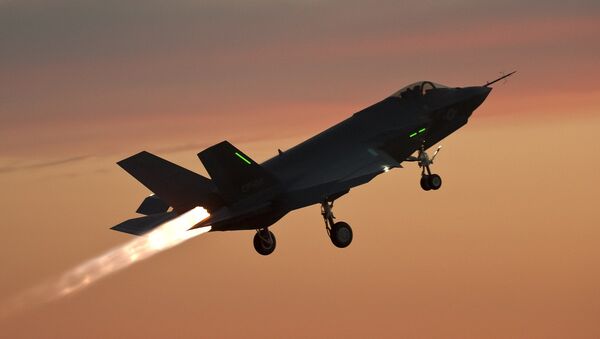Speaking to lawmakers from the Senate appropriations subcommittee on defense this week, MDA director Lt. Gen. Samuel Greaves said that pending funding for a ballistic missile defense interceptor, the F-35 would gain the capability to shoot down enemy strategic missiles.
"I'd say six to seven years to essentially work out the Concept of Operations [and] develop the capabilities – [whether] it's sensor-based or a new fast missile that's hung on the bottom of an F-35 for the BMDS [Ballistic Missile Defense System] mission – to integrate those capabilities, test them and deliver them into a theater of operations," the officer said.
F-35 developer and manufacturer Lockheed Martin has been promoting the plane as a possible nuke interceptor for years, but officials at the Pentagon previously declined to offer a timeframe on how long it would take to make this happen, or its cost.
Lockheed touts the F-35 as a 'do it all' airplane, a boast which has led to skyrocketing costs, delivery issues and quality control problems. The total program cost of the F-35, accounting for R&D, procurement and operations is now estimated at a staggering $1.6 trillion over 60 years.
Russia recently wrapped up development of its new Sarmat intercontinental ballistic missile. According to estimates by the Russian military, it would take at least 500 US anti-missile missiles to intercept a single Sarmat. Last month, US Strategic Command chief Gen. John Hyten admitted that the US military has nothing in its arsenal that could stop Russia's new weapons. Also last month, President Putin announced that Russia has created a series of maneuverable, hypersonic weapons systems. According to the president, these weapons are invulnerable to any existing or prospective missile defenses, and are aimed at maintaining global strategic stability amid the US's ongoing research into missile defense.



